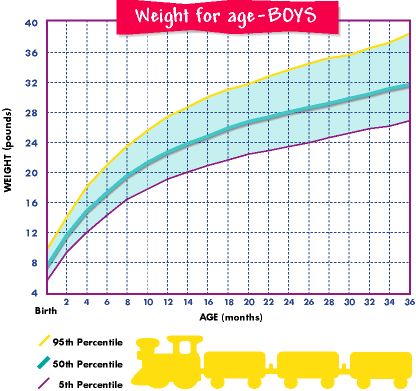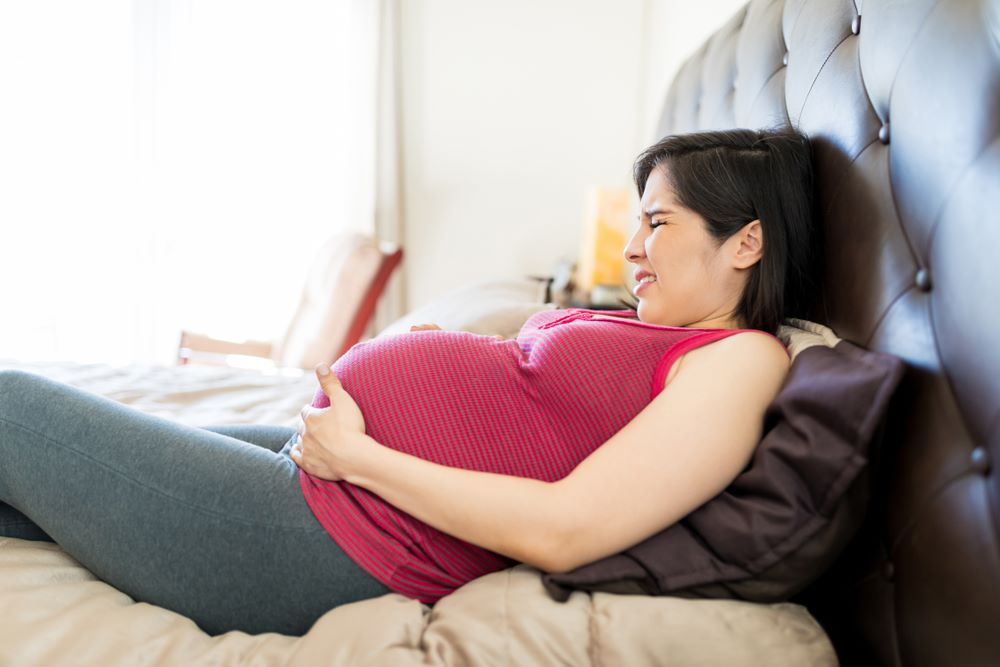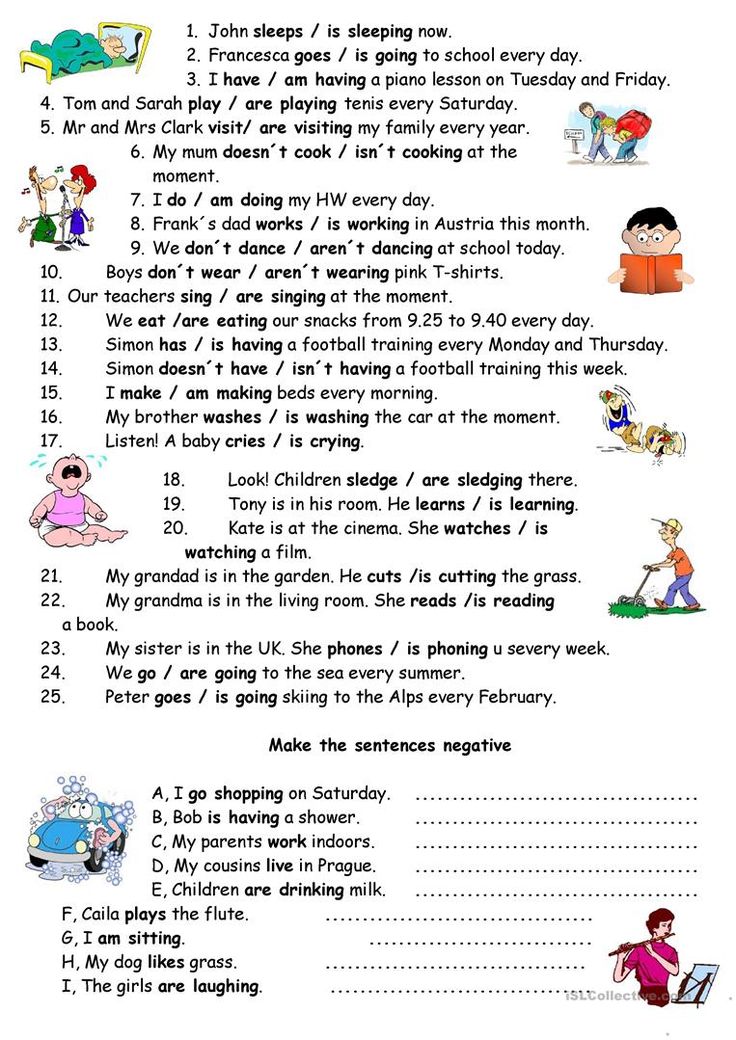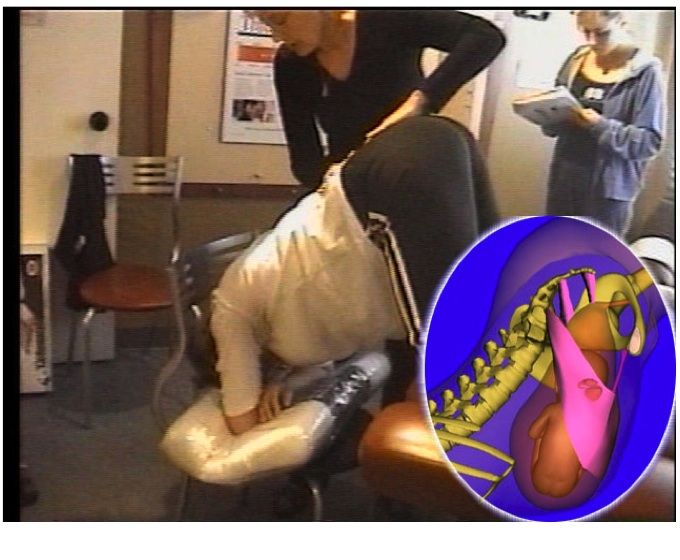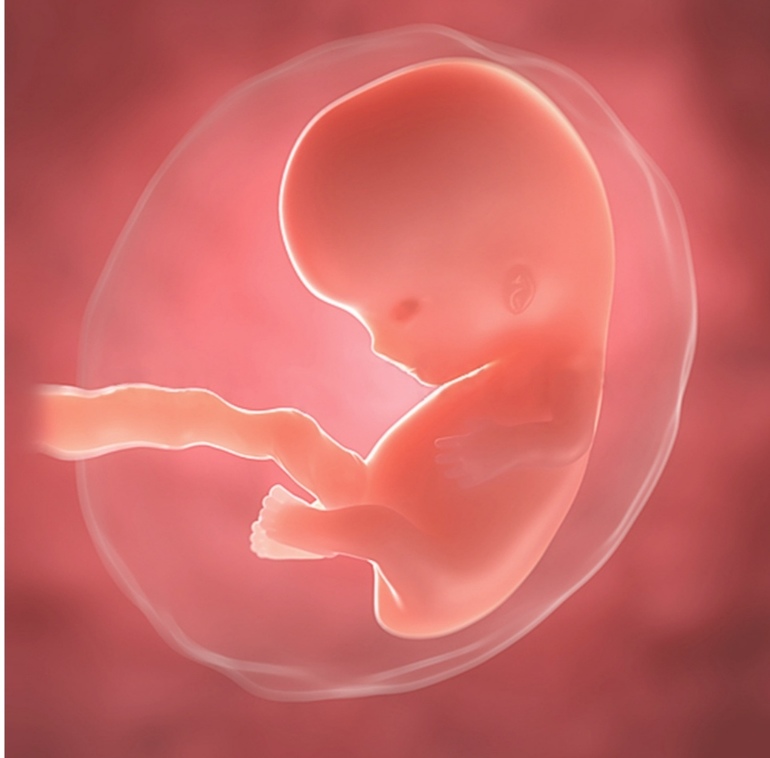Why do baby move so much in the womb
What It Means and When to Worry
Some days, you may feel like a human punching bag turned inside out — with the kicks, punches, and head butts coming from the little one in your womb. You wonder: Is this normal? The kicking may lead you to believe that you’ll be raising a soccer star.
Even if your pregnant sister-in-law or BFF report no such intensity, rest assured that your experience is very within the realm of normal. Let’s look at what it may mean.
The fetal movements you feel are an indication that your baby is growing both in size and strength. Research, including this 2016 study, shows that pregnant people can be highly attuned to their baby’s activity, including:
- frequency of movement (less or more often than expected)
- intensity of movement (weaker or stronger than expected)
- duration of movement (shorter or longer than expected)
- character of movement (a change of pattern — slower or faster than expected)
If your baby is very active, your friends and family may repeat urban legends, such as an active baby results in a smart, boisterous, or athletic child. These claims are largely unfounded.
Your doctor, however, will most likely explain that, to promote healthy bone and joint development, your baby needs to exercise. So this activity is probably normal and healthy movement — not an indicator of the person the baby will grow up to be.
Chances are they’ll also tell you that there’s no such thing as too active a baby in utero, and that as your pregnancy progresses, your baby will tend to grow and become even more active.
Periods of higher activity
Babies are often more active at certain times of day, such as after you’ve eaten a meal or when you’re lying down in bed. (In contrast, your movement — such as a walk around the block — can lull them to sleep.)
And, if your stomach is full (and taking up more room), you might be able to feel that movement even more.
Every pregnancy is different
Remember that no two pregnancies are exactly the same. Friends and family members may have stories about their pregnancies and compare the activity level of their babies to yours.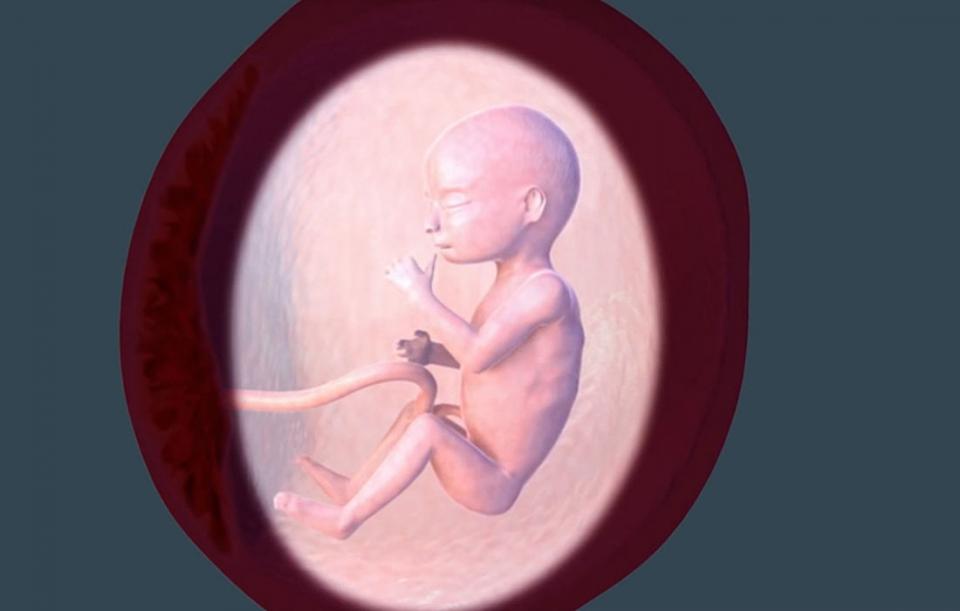 Or in a previous pregnancy, you might not have experienced the same level of activity.
Or in a previous pregnancy, you might not have experienced the same level of activity.
All babies are different, but in most cases, an active baby is a healthy baby.
Feeling your baby’s first gentle kick can be a wonderfully exciting moment, but after a while, the kicks can sometimes be surprisingly forceful.
Many people don’t realize how strong a baby in the womb can be. A 2018 report estimated that fetuses kick with up to 6.5 pounds of force at just 20 weeks. At 30 weeks, their legs can generate up to 10.5 pounds of force. At 35 weeks, the force drops off to 3.8 pounds of force as your baby starts running out of space.
And, while this kicking is going on, by 15 weeks, your baby is also punching with their little limbs and moving their head.
By your third trimester, your healthcare provider will most likely have you monitoring your baby’s movements.
Your doctor may suggest kick counting: counting the number of kicks your baby makes in a certain time period (typically 10 minutes).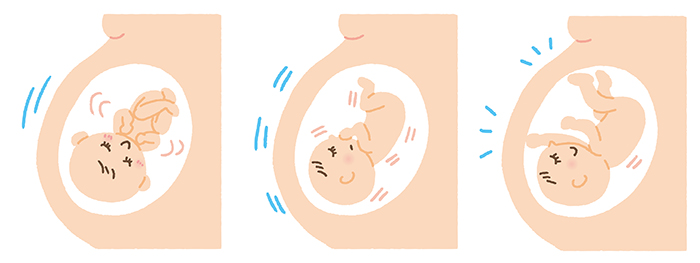 This should be done at the same time every day so you can monitor changes in activity.
This should be done at the same time every day so you can monitor changes in activity.
There’s no set number of kicks you should feel. Once you’ve set up a baseline of how many kicks to expect during that period, you can discuss any increase or decrease in activity with your doctor.
If your active baby becomes less active, tell your doctor. A decrease in fetal movement may indicate a potential problem that your doctor should address early.
A 2020 study of pregnant women who sought care for reduced fetal movement indicated that the poor neonatal outcome (particularly stillbirth) ranged from 6.2 percent to 18.4 percent within different groups.
The highest incidence was among women in the groups with small-for-gestational-age fetuses. The study recommended a routine ultrasound assessment for fetal growth during the third trimester.
Bottom line: If you aren’t able to feel fetal movement after 22 weeks, or if you experience a decrease in fetal movement any time in your third trimester, talk with your doctor. Your baby may still be healthy, but you may need additional monitoring.
Your baby may still be healthy, but you may need additional monitoring.
As your pregnancy progresses, you’ll typically feel your baby move. Generally, an active baby is a healthy baby. The movement is your baby exercising to promote healthy bone and joint development.
All pregnancies and all babies are different, but it’s unlikely that lots of activity means anything other than your baby is growing in size and strength.
By your third trimester, your doctor will probably have you kick counting to monitor the level of your baby’s activity. If after 22 weeks you don’t feel movement, your doctor may suggest additional monitoring.
How Much Should My Baby Move During Pregnancy?
- Download PDF Copy
By Dr. Liji Thomas, MDReviewed by Dr. Mary Cooke, Ph.D.
Skip to:
- Is Reduced Fetal Movement Important?
- Why are Reduced Fetal Movements Worrying?
- Is it Bad When the Baby Moves too Much?
- How Do We Test for Fetal Wellbeing?
- Summing Up
Image Credit: Gorodenkoff / Shutterstock
Most doctors and pregnant women would say they feel more at ease when the baby is moving regularly. A fetal movement (kick, roll, or flutter) is usually first perceived at 18 to 20 weeks of pregnancy.
A fetal movement (kick, roll, or flutter) is usually first perceived at 18 to 20 weeks of pregnancy.
Pregnant woman with visible uterus and fetus week 19 - IllustrationImage Credit: Sebastian Kaulitzki / Shutterstock
The number of movements increases steadily until about 32 weeks of pregnancy, and then remains more or less constant until the baby is born.
Pregnant woman with visible uterus and fetus week 32 - IllustrationImage Credit: Sebastian Kaulitzki / Shutterstock
Most babies remain still while they sleep, for about 90 minutes or less at a time. At other times, they may be felt to move for episodes lasting 20 to 40 minutes throughout the day.
Individual babies have their own patterns of movement. Even though the baby is short of room at the end of a pregnancy, because of increasing fetal weight, fetal movements remain strong and regular. However, if the baby doesn’t move well for a long time, something may be wrong.
Is Reduced Fetal Movement Important?
Almost half of all pregnant women who have access to medical care may ask for help because of perceived reduction in fetal movements.
Sometimes this is due to factors such as excessive fluid around the baby, unusual fetal position, an anterior placenta, an overweight mother, a first-time mother, or a history of smoking.
Sometimes the mother doesn’t notice fetal movements because they are distracted. In most of these cases the baby is healthy.
However, decreased fetal movement may indicate a higher risk of fetal illness or death in about 25% of cases, chiefly because of impaired oxygen and blood supply. In cases of intrauterine death, the fetal movements cease altogether for 24 hours or more beforehand. Therefore, in cases like these the health of the baby must be checked.
Related Stories
- Study shows increased risks of death in offspring born to mothers with hypertensive disorder of pregnancy
- Does maternal insulin tolerance during pregnancy influence child adiposity?
- Pregnancy and birthing have long-lasting effects on the maternal brain
The most common way to differentiate between a false and true perception of altered fetal movements is to do the so-called ‘kick count’. However, in cases where the baby’s health is compromised this test is not useful as it is positive only after the baby has suffered permanent damage.
However, in cases where the baby’s health is compromised this test is not useful as it is positive only after the baby has suffered permanent damage.
In practical terms, in many cases the mother’s feeling that the baby is moving less is an equally important indicator of fetal distress.
Why are Reduced Fetal Movements Worrying?
In many cases, reduced fetal movements have been related to lower growth rate and a higher rate of stillbirth.
With low placental flow, the baby moves less to compensate for its insufficient placental supply. However, babies typically move more when they are hungry, or when the blood sugar level in the mother drops.
If this is absent, it could indicate that the baby is so weak that it cannot even seek food, and therefore needs urgent help.
Another reason for reduced fetal movements can be the result of the mother supplying too much blood sugar to the baby, as in maternal diabetes or prediabetic states. This is because oxygen is used to metabolize glucose, leaving little for fetal activity.
Is it Bad When the Baby Moves too Much?
Fetal movements typically increase when the mother is hungry, reflecting lowered blood sugar levels in the mother and fetus. This is similar to the increased activity of most animals when they are seeking food, followed by a period of quietness when they are fed.
It is possible that smaller babies move more when they are hungry or when their blood sugar level is dropping, because they are already receiving less food via the placenta for some reason, compared to larger babies with a good placental supply.
A more serious phenomenon is the occurrence of a single sudden episode of unusually vigorous fetal movements at the end of a pregnancy.
This has been linked in one study to a sevenfold risk of stillbirth. Several possible causes are listed, including lack of oxygen supply or infection leading to seizures, or the fetus trying to get free of the umbilical cord entangled around some part of the body.
This type of movement, described as “frantic” or “crazy”, is in contrast to the increased strong and frequent movements felt in normal pregnancy towards term.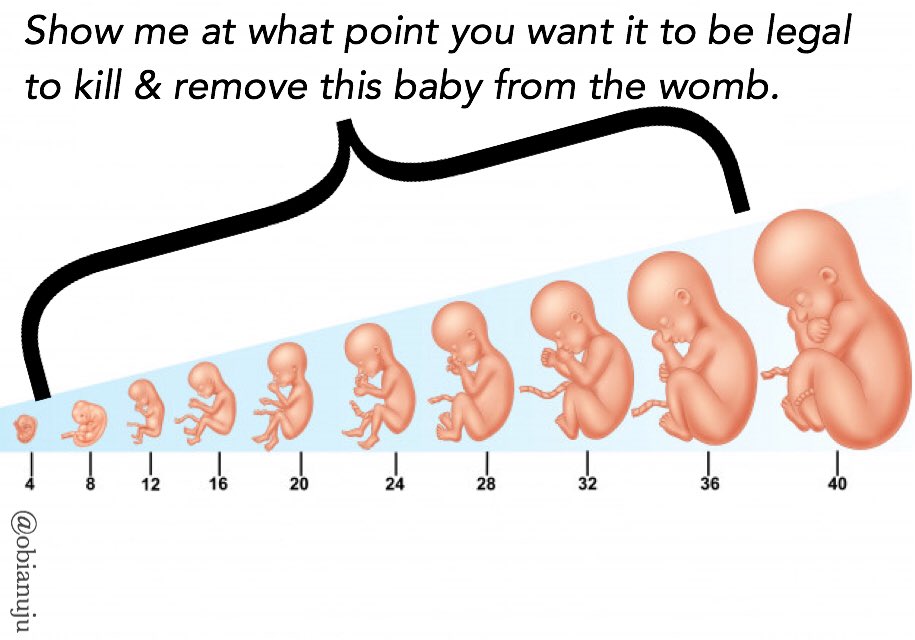
Ways to check if the change in fetal movement is of concern include:
- Cardiotocography, where the fetal heart rate is observed for its baseline rate and short-term variability, as well as for accelerations with fetal movement, is normal in 97% of active fetuses. Isolated late decelerations with other features being normal are not usually a sign of fetal distress as previously thought, as in many cases they are due to fetal breathing movements, a sign of fetal health.
- Doppler ultrasound can help detect early signs of poor placental blood supply and poor fetal growth (FGR, fetal growth restriction), typically only after almost a third of the placenta is affected, in the form of altered blood flow through the umbilical artery and veins. This method is more commonly used in Europe than the USA.
- Fetal biophysical profile is another method used to assess fetal health, but abnormality is generally very late to occur, though one study showed it to be more sensitive in predicting a poor delivery outcome than Doppler ultrasound of the umbilical artery
Normal Fetal Movement and Growth | Kaiser Permanente
Summing Up
It is recommended that if a mother feels any more than momentary change in fetal movements, the healthcare provider should confirm that the baby is well.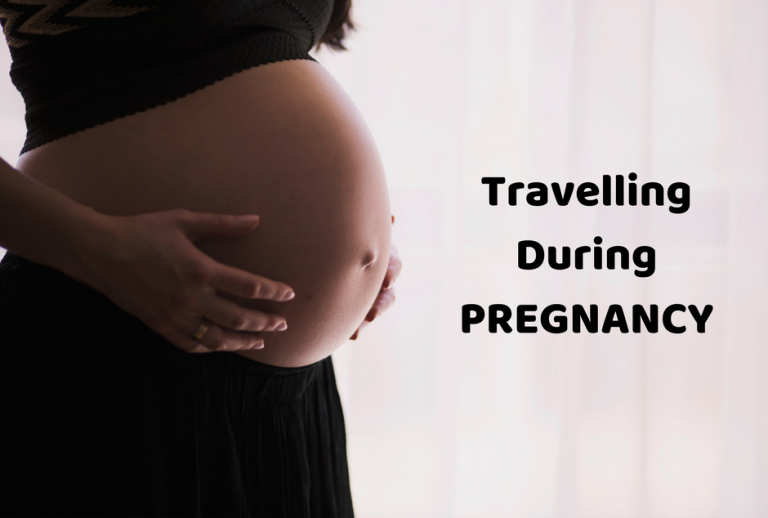
Formal fetal movement counts of some accepted type may be performed to accurately detect this type of change. However, these tests have not yet been proved to be reliable in identifying babies at risk of distress or death before it is too late to intervene successfully.
Sources
- Linde A., et al., (2019). Fetal movement in late pregnancy – a content analysis of women’s experiences of how their unborn baby moved less or differently. BMC Pregnancy and Childbirth. https://dx.doi.org/10.1186%2Fs12884-016-0922-z
- Lai J., et al., (2019). Fetal movements as a predictor of health. Acta Obstetricia et Gynecologica Scandinavica. https://doi.org/10.1111/aogs.12944
- Bradford B., et al., (2014). Fetal response to maternal hunger and satiation – novel finding from a qualitative descriptive study of maternal perception of fetal movements. BMC Pregnancy and Childbirth. https://doi.org/10.1186/1471-2393-14-288
- Mangesi L.
 , et al., (2015). Fetal movement counting for assessment of fetal wellbeing. Cochrane Database of Systematic Reviews. doi: 10.1002/14651858.CD004909.pub3/epdf/standard
, et al., (2015). Fetal movement counting for assessment of fetal wellbeing. Cochrane Database of Systematic Reviews. doi: 10.1002/14651858.CD004909.pub3/epdf/standard - Heazell A. E. P., et al., (2018). Excessive fetal movements are a sign of fetal compromise which merits further examination. Medical Hypotheses. doi: 10.1016/j.mehy.2017.12.024
- Rayburn W. F., et al., (1983). Excessive fetal activity: another worrisome sign? Southern Medical Journal. https://doi.org/10.1097/00007611-198302000-00005
- Stacey T., et al., (2011). Maternal Perception of Fetal Activity and Late Stillbirth Risk: Findings from the Auckland Stillbirth Study. Birth. https://doi.org/10.1111/j.1523-536X.2011.00490.x
- Heazell A. E. P., et al., (2017). Stillbirth is associated with perceived alterations in fetal activity – findings from an international case control study. BMC Pregnancy and Childbirth. https://doi.org/10.1186/s12884-017-1555-6
- Unterscheider J.
 , et al., (2009). Review: Reduced fetal movements. The Obstetrician & Gynaecologist. obgyn.onlinelibrary.wiley.com/doi/pdf/10.1576/toag.11.4.245.27527
, et al., (2009). Review: Reduced fetal movements. The Obstetrician & Gynaecologist. obgyn.onlinelibrary.wiley.com/doi/pdf/10.1576/toag.11.4.245.27527
Last Updated: Sep 19, 2019
- Download PDF Copy
Please use one of the following formats to cite this article in your essay, paper or report:
APA
Thomas, Liji. (2019, September 19). How Much Should My Baby Move During Pregnancy?. News-Medical. Retrieved on November 21, 2022 from https://www.news-medical.net/health/What-Does-it-Mean-if-Your-Baby-is-Very-Active-or-Very-Still-During-Pregnancy.aspx.
MLA
Thomas, Liji. "How Much Should My Baby Move During Pregnancy?". News-Medical. 21 November 2022. <https://www.news-medical.net/health/What-Does-it-Mean-if-Your-Baby-is-Very-Active-or-Very-Still-During-Pregnancy.aspx>.
Chicago
Thomas, Liji. "How Much Should My Baby Move During Pregnancy?".
 News-Medical. https://www.news-medical.net/health/What-Does-it-Mean-if-Your-Baby-is-Very-Active-or-Very-Still-During-Pregnancy.aspx. (accessed November 21, 2022).
News-Medical. https://www.news-medical.net/health/What-Does-it-Mean-if-Your-Baby-is-Very-Active-or-Very-Still-During-Pregnancy.aspx. (accessed November 21, 2022).Harvard
Thomas, Liji. 2019. How Much Should My Baby Move During Pregnancy?. News-Medical, viewed 21 November 2022, https://www.news-medical.net/health/What-Does-it-Mean-if-Your-Baby-is-Very-Active-or-Very-Still-During-Pregnancy.aspx.
Suggested Reading
Fetal movement - how and when does it occur
- At what time does fetal movement begin
- Fetal movement rate
- Methods for assessing the "sufficiency" of fetal movements
- Changes in fetal activity
- Determination of the condition of the fetus
“Dear patients, we are glad to welcome you to the website of the Fetal Medicine Center – a medical center of expert level in the field of modern prenatal medicine.
We see our mission in making the expectation of a child and its birth a happy, calm and most comfortable period for every woman. By providing professional medical support, we help couples plan pregnancy, control its harmonious course, conduct expert-level prenatal diagnostics, providing comprehensive care for the health of the expectant mother and baby.”
Roza Saidovna Bataeva
Head of the Fetal Medicine Center in Moscow
From the very beginning of pregnancy, every expectant mother begins to listen carefully to the sensations inside her growing belly. Can't wait to feel your baby move. When does the fetus begin to move? At what time can a pregnant woman begin to listen carefully to herself, waiting for the first movements of her child? Should I be worried if they are not felt or the baby suddenly calmed down? And can movements carry any other information, besides communicating with mom?
At what time does the fetal movement begin
The first movements of the future baby begin early - already at 7-8 weeks of pregnancy . It was at this time that the first muscles and the rudiments of the nervous system of the fetus are formed. Naturally, at this time, the movements of the embryo are still very primitive - these are muscle contractions in response to nerve impulses.
It was at this time that the first muscles and the rudiments of the nervous system of the fetus are formed. Naturally, at this time, the movements of the embryo are still very primitive - these are muscle contractions in response to nerve impulses.
Approximately from 10 weeks of pregnancy the fetus begins to move more actively in the uterus, and, encountering an obstacle on its way (walls of the uterus), change the trajectory of movements. However, the baby is still very small and the impacts on the uterine wall are very weak, the expectant mother cannot yet feel them. At 11-12 weeks of intrauterine life, a little man already knows how to clench his fists, grimace, frown, by 16 weeks of pregnancy he begins to react to loud, sharp sounds with increased motor activity, at 17 weeks the first facial expressions appear, and at 18 weeks he covers his face with his hands and plays with the umbilical cord, clenching and unclenching the fingers.
Gradually, with increasing gestational age, movements become more coordinated and more like conscious. When the baby grows up, the pregnant woman begins to feel his movements.
When the baby grows up, the pregnant woman begins to feel his movements.
When does fetal movement begin during the first and subsequent pregnancies
It is generally accepted that during the first pregnancy, the expectant mother feels the first fetal movements at 20 weeks of pregnancy, with repeated pregnancies - at 18 weeks. This is not entirely true. A mother who is expecting her first child, indeed, most often begins to feel the movements of the fetus a little later than a multiparous woman. This is due to the fact that "experienced" mothers know how the movements of the crumbs are felt at first and what they should feel. Some primigravidas perceive the first movements of the fetus as an increase in intestinal peristalsis, “gaziki”. Many women describe the first movements of the fetus as a feeling of fluid transfusion in the abdomen, "fluttering butterflies" or "swimming fish."
The first movements are usually rare and irregular. The time of the first sensations of fetal movements naturally depends on the individual sensitivity of the woman. Some future mothers feel the first movements as early as 15-16 weeks, and someone only after 20. Slender women, as a rule, begin to feel movements earlier than full ones. Women who lead an active lifestyle, work hard, usually feel the movements of the fetus later.
Some future mothers feel the first movements as early as 15-16 weeks, and someone only after 20. Slender women, as a rule, begin to feel movements earlier than full ones. Women who lead an active lifestyle, work hard, usually feel the movements of the fetus later.
By 20 weeks, due to the formation of the spinal cord and brain, as well as the accumulation of a certain amount of muscle mass in the fetus, movements become more regular and noticeable .
From 24 weeks of pregnancy, the movements of the fetus are already reminiscent of the movements of a newborn - the expectant mother feels how the fetus changes position, moves its arms and legs. The motor activity of the fetus increases gradually and its peak falls on the period from the 24th to the 32nd week of pregnancy. At this time, the activity of the baby's movements becomes one of the indicators of its normal development. After 24 weeks, the child begins to "communicate" with the mother with the help of movements, respond to the sounds of voice, music, and the emotional state of the mother. With an increase in the gestational age of more than 32 weeks, the motor activity of the fetus gradually decreases due to the fact that the baby is growing up and he simply does not have enough space for active movements. This becomes especially noticeable at the time of childbirth. By the end of the third trimester of pregnancy, the number of fetal movements may decrease somewhat, but their intensity and strength remain the same or increase.
With an increase in the gestational age of more than 32 weeks, the motor activity of the fetus gradually decreases due to the fact that the baby is growing up and he simply does not have enough space for active movements. This becomes especially noticeable at the time of childbirth. By the end of the third trimester of pregnancy, the number of fetal movements may decrease somewhat, but their intensity and strength remain the same or increase.
Fetal movement rate
The baby in the mother's belly moves almost constantly. At the 20th week of pregnancy, the fetus makes about 200 movements per day, and between the 28th and 32nd weeks, the number of movements reaches 600 per day. Naturally, a pregnant woman does not feel all the movements of the fetus, but only a small part of them. So, after 28 weeks, the frequency of fetal movement, according to the sensations of a woman, is usually 4 to 8 times per hour, with the exception of periods of fetal sleep (3-4 hours in a row).
In the third trimester, a pregnant woman may notice that her baby has regular sleep and wake cycles. Children are usually most active from 19:00 to 4:00 in the morning, and the period of "rest" occurs more often from 4 to 9:00 in the morning. Of course, the movements of the fetus depend on the mood of the mother, if the mother is worried or happy, the baby can move more actively, or vice versa, calm down. The fact is that when a mother rejoices, her body significantly increases the amount of hormones of joy - endorphins, which regulate the work of the heart and blood vessels, including the vessels of the placenta. During stress or pronounced negative emotions, biologically active substances are also produced - stress hormones, they also affect the work of the heart and blood vessels. It is thanks to this biological interaction between the organisms of mother and baby that the fetus feels the state of the mother. When the expectant mother is resting, the baby usually becomes more active, if the pregnant woman is active, busy with some kind of work, the child most often calms down. The movements also change depending on the satiety of the expectant mother.
Children are usually most active from 19:00 to 4:00 in the morning, and the period of "rest" occurs more often from 4 to 9:00 in the morning. Of course, the movements of the fetus depend on the mood of the mother, if the mother is worried or happy, the baby can move more actively, or vice versa, calm down. The fact is that when a mother rejoices, her body significantly increases the amount of hormones of joy - endorphins, which regulate the work of the heart and blood vessels, including the vessels of the placenta. During stress or pronounced negative emotions, biologically active substances are also produced - stress hormones, they also affect the work of the heart and blood vessels. It is thanks to this biological interaction between the organisms of mother and baby that the fetus feels the state of the mother. When the expectant mother is resting, the baby usually becomes more active, if the pregnant woman is active, busy with some kind of work, the child most often calms down. The movements also change depending on the satiety of the expectant mother. Usually the baby begins to move actively after the mother eats, especially something sweet. At the same time, the level of glucose in the blood increases sharply, which causes the fetus to be more active.
Usually the baby begins to move actively after the mother eats, especially something sweet. At the same time, the level of glucose in the blood increases sharply, which causes the fetus to be more active.
Fetal movements are the language in which the unborn child speaks to the mother. Naturally, a pregnant woman should listen to the movements, because in some cases, changes in the movements of the fetus may indicate a violation of its intrauterine state and a not entirely successful pregnancy.
If, after 20 weeks of pregnancy, the expectant mother does not feel the movement of the fetus, it may be worthwhile to see a doctor and make sure that everything is in order with the baby.
Methods for assessing the "sufficiency" of fetal movements
Counting the number of movements
The easiest way to assess fetal movements is to count the number of movements of the pregnant woman herself. Self-assessment methods are very easy to use, do not require additional equipment, the presence of a doctor and are easily reproducible by any woman.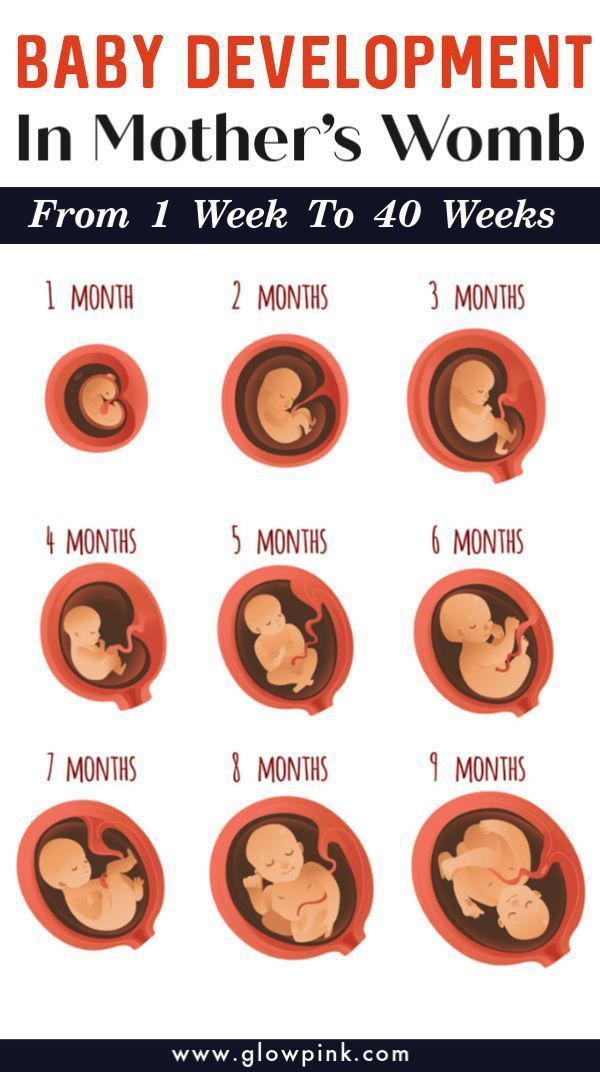 Their disadvantages are that each woman has different thresholds of susceptibility.
Their disadvantages are that each woman has different thresholds of susceptibility.
Count to ten
The most common method for assessing fetal movements is called count to ten . It can be carried out after 28 weeks of pregnancy, when the fetus is mature enough for active movements. Its essence lies in the fact that the expectant mother counts the movements of the fetus for a 12-hour time interval, for example, from 9 am to 9 pm. The time when a pregnant woman catches the tenth movement is recorded on a tablet. If the fetus makes less than 10 movements in 12 hours, this is a reason to consult a doctor for an additional examination.
Sadowski method
In the evening after dinner (approximately between 7until 11 p.m.), the woman lies on her left side and counts the movements of the fetus. At the same time, everything is considered, even the smallest movements. If 10 or more movements are noted within an hour, this indicates that the baby is moving quite actively and feels good. If the fetus moved less than 10 times in an hour, then the movements are counted for the next hour. Evening time for this assessment method was not chosen by chance. It is in the evening hours, especially after dinner and the associated increase in glucose, that the greatest activity of the fetus is noted. If the number of fetal movements during this test is less than 10 per two hours, this should be considered as a sign of a violation of his condition and additional studies should be carried out.
If the fetus moved less than 10 times in an hour, then the movements are counted for the next hour. Evening time for this assessment method was not chosen by chance. It is in the evening hours, especially after dinner and the associated increase in glucose, that the greatest activity of the fetus is noted. If the number of fetal movements during this test is less than 10 per two hours, this should be considered as a sign of a violation of his condition and additional studies should be carried out.
For an obstetrician-gynecologist, fetal movements are also an important diagnostic criterion for some deviations in the course of pregnancy from the norm. Too active, violent, painful fetal movement or weak, rare movements may indicate its unfavorable condition.
Changes in fetal activity
Changes in fetal activity may be associated with external influences. For example, if a pregnant woman lies on her back for a long time, then the enlarged uterus compresses a large vessel - the inferior vena cava, the blood flow to the fetus is disrupted, which immediately causes its violent reaction - active movements.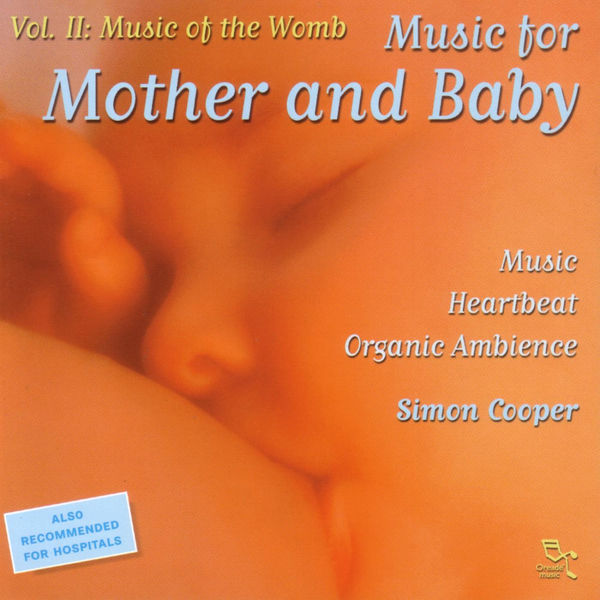 The same changes in the activity of the baby can occur in any other uncomfortable position of the mother - if she leans forward, squeezing her stomach, sits with her legs crossed, the child forces her mother to change her position with her activity. A similar situation occurs if the baby himself squeezes or presses the loops of the umbilical cord, limiting the flow of blood through it. He begins to move more actively, changes his position and relieves pressure on the umbilical cord. However, in some cases, an increase or vice versa, a subsidence of fetal movements can be a sign of a serious pathology.
The same changes in the activity of the baby can occur in any other uncomfortable position of the mother - if she leans forward, squeezing her stomach, sits with her legs crossed, the child forces her mother to change her position with her activity. A similar situation occurs if the baby himself squeezes or presses the loops of the umbilical cord, limiting the flow of blood through it. He begins to move more actively, changes his position and relieves pressure on the umbilical cord. However, in some cases, an increase or vice versa, a subsidence of fetal movements can be a sign of a serious pathology.
After 28 weeks of pregnancy, if your baby does not let you know for 3-4 hours, he may just be sleeping. In this case, the expectant mother needs to eat something sweet and lie down on her left side for half an hour. If these simple manipulations do not lead to a result, it is worth repeating them again after 2-3 hours. If this time the baby does not make itself felt, this is an occasion to consult a doctor. Rare and weak movements can also indicate a fetal problem, most often a lack of oxygen for the baby, that is, fetal hypoxia.
Rare and weak movements can also indicate a fetal problem, most often a lack of oxygen for the baby, that is, fetal hypoxia.
Determining the condition of the fetus
To determine the condition of the fetus, the doctor conducts a series of examinations:
Auscultation (listening)
The simplest is auscultation (listening) with a special wooden tube (obstetric stethoscope) or a special apparatus that captures the fetal heartbeat, doctor listens to the baby's heartbeat. Normally, it is about 120-160 beats per minute. A decrease in heart rate less than 120 or an increase of more than 160 indicates intrauterine suffering of the child.
Ultrasound and dopplerometry
During ultrasound, the doctor visually assesses the size of the fetus, the compliance of the development of the fetus with the gestational age, because with oxygen starvation, the growth rate of the fetus slows down and its size lags behind the norm for each period of pregnancy. Also important is the structure of the placenta, the presence of signs of aging in it, as a result of which the function of transferring blood, oxygen and nutrients to the fetus usually worsens. During ultrasound, the amount and type of amniotic fluid is assessed, which can also change with intrauterine fetal suffering. Dopplerometry of the vessels of the placenta and umbilical cord is a method for studying blood flow velocities in these vessels. With a decrease in the speed of blood flow in any vessel, one can speak of fetal malnutrition of varying severity.
Also important is the structure of the placenta, the presence of signs of aging in it, as a result of which the function of transferring blood, oxygen and nutrients to the fetus usually worsens. During ultrasound, the amount and type of amniotic fluid is assessed, which can also change with intrauterine fetal suffering. Dopplerometry of the vessels of the placenta and umbilical cord is a method for studying blood flow velocities in these vessels. With a decrease in the speed of blood flow in any vessel, one can speak of fetal malnutrition of varying severity.
Cardiotocography (CTG)
This is an important method for assessing the condition of the fetus. CTG is performed at a gestational age of 33 weeks or more, since only in this period of intrauterine development of the baby is a full-fledged regulation of the activity of the cardiovascular system of the fetus by the centers of the spinal cord and brain. Recording of fetal heartbeats is carried out for at least 40 minutes, and if necessary, the study can be extended up to one and a half hours. The device registers and records the baby's heart rate. For example, with a decrease in the concentration of oxygen in the blood of the fetus, the supply of oxygen to the cells of the nervous system decreases, which in turn affects the heart rate, especially during the period of wakefulness of the child. The obstetrician-gynecologist evaluates the heartbeat recording curve, episodes of slowing down and a sharp increase in the fetal heart rate, and based on these data, makes a conclusion about how comfortable the baby feels in the mother's stomach.
The device registers and records the baby's heart rate. For example, with a decrease in the concentration of oxygen in the blood of the fetus, the supply of oxygen to the cells of the nervous system decreases, which in turn affects the heart rate, especially during the period of wakefulness of the child. The obstetrician-gynecologist evaluates the heartbeat recording curve, episodes of slowing down and a sharp increase in the fetal heart rate, and based on these data, makes a conclusion about how comfortable the baby feels in the mother's stomach.
If during additional methods for assessing the condition of the fetus, initial disturbances in the supply of oxygen to the baby are detected, drug treatment is carried out aimed at increasing the access of blood and oxygen through the placenta and mandatory control examinations against the background of ongoing therapy. If the changes are deep and the baby experiences a pronounced deficiency of oxygen and nutrients, his condition suffers, an emergency delivery of such a patient is performed.
Fetal movements are not only an indicator of his condition, it is a way of communication between the baby and parents. The movements of the crumbs in the mother's tummy are unforgettable sensations that a woman can experience only in this short, but such a happy period of her life.
Center for Fetal Medicine in Moscow:
The main activities of our center are the early detection of congenital malformations in the fetus, prenatal screening for the detection of chromosomal abnormalities in the fetus, as well as pregnancy complications such as preeclampsia, fetal growth retardation and threatened abortion.
Our center is organized in such a way that the whole range of services is concentrated in one place, where a woman receives the results of various types of examinations, including ultrasound, biochemical, and specialist consultation within 1-1.5 hours. In the presence of a high risk for chromosomal diseases in the fetus, invasive diagnostics and genetics consultation are carried out here in the center.
Fetal echocardiography is given special attention in our center, since congenital heart defects in the fetus are increasingly common today, but, unfortunately, are often missed during ultrasound during pregnancy.
In view of the ever-increasing number of multiple pregnancies, which requires more time and a special approach, the observation of women with multiple pregnancies has been allocated to us in a separate clinic for multiple pregnancies.
All examinations in the center are carried out according to the international standards FMF (Fetal Medicine Foundation) and ISUOG (International Society for Ultrasound in Obstetrics and Gynecology). In complex clinical cases, we can consult with specialists from King's College Hospital, King's College Hospital (London, UK).
The team is a special pride of the center. Our doctors are not only one of the leading specialists, professors, doctors and candidates of medical sciences, doctors of the highest categories, they are also a team of like-minded people and real enthusiasts in their field. All ultrasound diagnostic doctors in our center have international FMF certificates. Having extensive experience in prenatal diagnostics, we share our knowledge with our colleagues by conducting training courses.
All ultrasound diagnostic doctors in our center have international FMF certificates. Having extensive experience in prenatal diagnostics, we share our knowledge with our colleagues by conducting training courses.
The Center is equipped with the most modern diagnostic equipment: these are the latest generation ultrasound machines, GE Voluson E8 Expert, with a complete set of modern technologies, including three-dimensional ones, this is a biochemical analyzer, Delfia Xpress, these are workplaces with professional computer programs.
Fetal movements during pregnancy
Fetal movements are expected by pregnant women and obstetrician-gynecologists. This is a very important sign that allows you to judge that the pregnancy is going well, and the child is developing successfully. Also, the baby communicates with the mother with the help of movements and can tell her about any inconvenience, so you need to listen to the movements of the fetus.
When fetal movements appear
- The first fetal movements appear at the seventh or eighth week of pregnancy.
 However, the small fetus does not come into contact with the walls of the uterus, so the mother does not feel its movements.
However, the small fetus does not come into contact with the walls of the uterus, so the mother does not feel its movements. - Closer to the seventeenth week, the fetus begins to react to loud sound and light, from the eighteenth it begins to consciously move.
- A woman begins to feel movements during her first pregnancy from the twentieth week. In subsequent pregnancies, these sensations occur two to three weeks earlier. Also, a woman will feel the first movement of the fetus earlier if she is slim and leads an active lifestyle.
- From the twenty-eighth week, especially active movements are observed. The child "communicates" with the mother, reacts to her emotions. This continues until the thirty-second week, when the baby grows so much that it can no longer actively move in the uterus.
Fetal movement - as normal
Except for three to four hours a day when the baby sleeps, he is in constant motion. In the twentieth week, the fetus makes two hundred perturbations a day, from the twenty-eighth to the thirty-second, their number increases to six hundred. Then, the activity decreases again.
Then, the activity decreases again.
Fetal activity may vary depending on the following factors:
- Time of day . Usually the fetus moves more actively in the evening and at night.
- Mother's emotions . If a pregnant woman is under stress, then the child is frightened, may freeze and stop moving, or, conversely, react to adrenaline with active movements.
- Physical activity . During physical activity, the child is usually more calm than at rest. If the mother is in an uncomfortable position for a long time, the fetus may react with strong painful shocks.
- Pregnant diet . If the mother feels hungry, the child begins to move more actively. Also pushing and touching become stronger after eating. Especially if mom eats sweets.
- Environment a. The fetus reacts to loud sounds, sudden switching on of light. He may freeze in fear, or vice versa, begin to move more actively.

Why and how to count fetal movements
Changes in the motor activity of the fetus may be a sign of pregnancy pathology. Too strong, painful, or vice versa, weakened movements signal that the child does not have enough oxygen. This condition is called fetal hypoxia. In addition, sensations change when the amount of amniotic fluid changes. Therefore, it is important to count fetal movements, especially during the first pregnancy.
There are three methods for counting fetal movements:
- Pearson method . Movements are considered from nine in the morning to nine in the evening, during which physical activity is limited. In a special table, the time of every tenth movement is entered. Normally, the interval between them is less than an hour.
- Cardiff Method . Movements are counted for twelve hours. If during this period of time the child performed at least ten movements, the counting is stopped and starts again the very next day.

